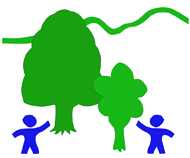EYFS
Reception at Catcott Primary School
Our vision
At Catcott Primary School, we are passionate about children being happy, confident, well-rounded individuals with a love for learning. Our pedagogy is inspired by the Reggio Emilia Approach. This philosophy views children as capable of acquiring knowledge within themselves through their natural curiosity and creativity. Along with teacher led sessions, our approach provides hands on discovery learning that allows the child to use all their senses. What they are interested in becomes an important element in their own learning process. Adults will be there to help support, scaffold and interact with each child to further their learning opportunities within the environment.
Within the EYFS we try to keep our environment calm, open, natural, comfortable, welcoming and intriguing. Our environment is planned to support all 7 areas of learning in the Early Years curriculum, with new learning experiences and enhancements being added each week to spark curiosity and new levels of challenge and engagement. We offer children access to a wide variety of learning tools and opportunities for them to explore and discover. Our environment serves as the third teacher after the teacher and our peers, within the environment children’s work is the focal point with each child having their own display area to showcase their individual learning journey and to enable them to share and revisit their learning experiences. We believe that our environment is another learning opportunity through which a child’s learning experience can be enriched.
At Catcott primary school, we believe that all children deserve to be valued as an individual and we are passionate in allowing all children to achieve their full, unique potential.
The Reggio Emilia approach believes that children use many many different ways to show their understanding and express their thoughts and creativity. A hundred different ways of thinking, discovering, through drawing, sculpting, dance, movement, painting, pretend play, through modelling and music. Each one of these ‘Hundred languages’ must be valued and nurtured.
